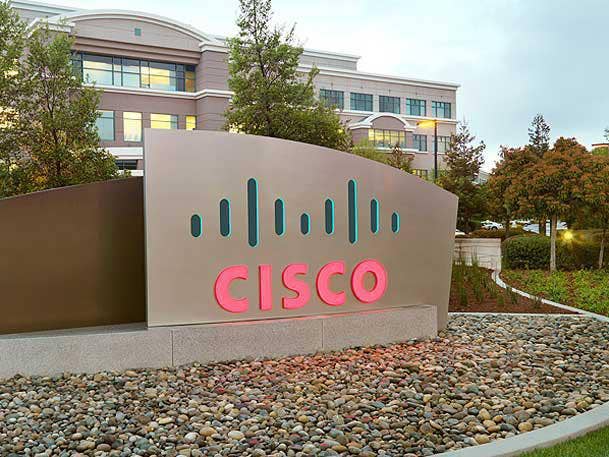Cisco Posts Record-Breaking Q1, Shrinks Product Backlog As Layoffs Loom
On the heels of a strong first fiscal quarter of the year, Cisco says it will “rebalance” certain business units, including Cisco’s Collaboration segment, to make way for further investments in strategic areas of growth, the company’s CEO Chuck Robbins announced on Wednesday.

Cisco Systems chipped away at its record-breaking backlog and posted its largest quarterly revenue total in the history of the company during its first fiscal quarter of 2023, according to Cisco Chairman and CEO Chuck Robbins.
The tech giant saw an easing of supply chain constraints and component shortages during Q1 2023, a shift that has allowed Cisco to deliver hardware, which has in turn, released software subscriptions that “were sitting in backlog,” the company’s CEO said during the company’s Q1 2023 earnings call on Wednesday evening.
But despite a positive start to the fiscal year, Robbins took to the earnings call to confirm plans to “rebalance” certain business units, including Cisco’s Collaboration segment. Employees will be notified on Thursday of the coming job cuts, Robbins said.
“The people impact is difficult … it’s always a difficult decision, but we have a lot of opportunity,” he said. “There’s nothing that’s a lower priority, but we are rightsizing certain businesses.”
Cisco’s Collaboration segment declined 2 percent year over year to $1.09 billion in revenue compared to Q1 2022, which the company attributed to declines in Meetings, offset by growth in Cloud Calling and Contact Center.
[Related: Cisco’s Oliver Tuszik On Oversized SMB Opportunity: ‘Most Businesses In The World Are SMBs’]
Robbins said Cisco will be reinvesting in strategic areas that are primed for growth, such as the company’s security segment.
Cisco’s End-To-End Security segment posted 9 percent growth during the first quarter to $971 million, which Cisco CFO R. Scott Herren attributed to strength in the company’s zero-trust and unified management security approach, as well as high demand for the company’s Duo offerings.
Robbins said it continues to make progress on its business transformation to software and subscriptions. The company’s total annual recurring revenue (ARR) was up 7 percent year-over-year, to $23.2 billion. Both total software revenue and software subscription revenue climbed up 5 percent and up 11 percent year over year, respectively.
Cisco’s product revenues climbed 8 percent and service revenues stayed flat during Q1 2022, said Herren.
Cisco’s Secure, Agile Networks segment, which includes the core switching and routing businesses, posted revenues of $6.68 billion during the quarter, a 12 percent incline compared to Q1 2021’s result. The Secure, Agile Networks segment was impacted by supply chain constraints during the last quarter of Cisco’s fiscal 2022 year, but this quarter, the segment was buoyed by strength in the company’s popular Catalyst and Meraki product lines, while data center switching saw a modest decline, Herren said.
Cisco’s Catalyst line can now be managed via the Meraki dashboard, one of Cisco’s more popular portfolio updates announced this year.
Cisco’s Internet for the Future segment, which includes the company’s telecommunications, cloud, and optical networking products, declined 5 percent year over year with revenues of $1.31 billion. Cisco’s Webscale businesses, on the other hand, saw a double-digit increase in orders during the quarter, according to the company.
For fiscal Q1 2023 which ended October 29, Cisco’s revenue climbed 6 percent to $13.63 billion compared to $12.90 billion in the same period a year ago. Cisco posted diluted earnings per share of 65 cents, a 7 percent decline compared to 70 cents a year ago and net income of $2.7 billion in the first fiscal quarter of the year, a decline of 10 percent compared to the same quarter a year ago.
Cisco’s stock was up more than 4 percent in after-hours trading Wednesday to $46.13.